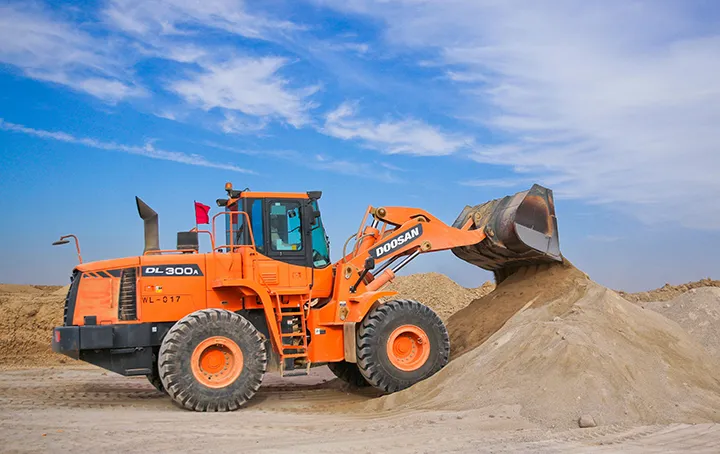Heavy equipment—excavators, bulldozers, skid steers, wheel loaders, backhoes, and crane trucks—is critical to construction, infrastructure, and industrial projects. But with that power comes significant risk. Heavy machinery is involved in some of the most serious workplace accidents, including rollovers, struck-by incidents, and caught-in injuries.
At Safety Training and Consulting Services (STC), our mission is to help employers create safer workplaces through comprehensive safety programs, audits, and training for all your safety needs. While we don’t deliver operator-specific training on heavy equipment, we specialize in supporting companies with safety consulting, regulatory compliance, emergency planning, and workplace-wide safety training that complements equipment operations.
This article highlights the biggest risks associated with heavy machinery and shares best practices for heavy equipment safety, plus how STC helps employers build safer sites overall.
1. Understanding the Risks of Heavy Equipment
1.1 Common Hazards
Heavy equipment hazards include:
- Struck-by and caught-in accidents when workers are too close to operating machines.
- Rollovers on unstable or sloped ground.
- Mechanical failures from poor maintenance.
- Blind spots that hide pedestrians from operators.
- Falls from height when climbing on or off machinery.
- Falling or shifting loads from improper securing or handling.
1.2 Why Safety Can’t Be Overlooked
According to safety regulators, accidents involving heavy equipment are among the leading causes of construction and industrial fatalities. Beyond the tragic human impact, these incidents also mean costly delays, fines, insurance claims, and reputational damage.
That’s why STC emphasizes risk awareness, workplace safety culture, and proper planning as essential parts of any heavy equipment project.
2. Heavy Equipment Safety In The Jobsite
2.1 Job Hazard Analysis (JHA)
STC works with employers to develop job hazard analyses (JHAs) that identify potential dangers before heavy equipment is used. These analyses help:
- Map out risk zones.
- Create exclusion areas for pedestrians.
- Establish safe communication protocols.
- Ensure that all workers—not just operators—understand the risks.
2.2 Inspection and Maintenance
Routine inspections and preventative maintenance are critical. Equipment failures often result from overlooked mechanical issues. Employers should enforce:
- Daily pre-use checks (fluids, brakes, lights, alarms, tracks/tires).
- Regular servicing per manufacturer guidelines.
- Documented inspection logs to prove compliance during audits.
2.3 Site Planning & Traffic Control
Safe worksites depend on good layout and traffic management:
- Designate separate paths for equipment and pedestrians.
- Use barriers, signage, and spotters to control high-risk areas.
- Implement low-speed limits in congested spaces.
- Conduct safety briefings so all workers know where equipment will operate.
STC helps organizations create custom traffic control and exclusion zone plans to reduce incidents.
3. Equipment-Specific Safety Considerations

3.1 Excavators
- Maintain stable ground and monitor slope angles.
- Keep workers clear of swing radius.
- Never overload the bucket or lift without proper support.
3.2 Bulldozers
- Always wear seatbelts to reduce rollover injuries.
- Avoid operating too close to embankments.
- Use spotters when reversing or pushing material.
3.3 Skid Steers
- Lower attachments before leaving the cab.
- Lock lift arms during maintenance.
- Avoid sudden turns on uneven terrain to prevent tipping.
3.4 Other Equipment
- Wheel Loaders: Keep loads low while traveling.
- Backhoes: Deploy outriggers for stability.
Cranes: Ensure loads are rigged properly and exclusion zones are enforced.
4. Building a Culture of Safety
Even the best equipment and procedures won’t prevent accidents without a strong safety culture. Employers can strengthen this by:
- Holding daily heavy equipment safety talks before equipment operations.
- Empowering workers to stop unsafe work without fear of reprisal.
- Encouraging reporting of near misses and hazards.
- Reinforcing safe practices with ongoing safety training.
At STC, we design safety training programs and consulting services that help organizations build a workforce committed to safe practices across all operations.
5. Emergency Preparedness
Despite prevention efforts, incidents can still happen. Preparedness is key:
- Develop and practice emergency response plans for rollovers, entrapments, or fires.
- Train workers in first aid, fire extinguisher use, and evacuation procedures.
- Keep emergency equipment (first-aid kits, spill kits, extinguishers) accessible.
- Document and investigate every incident to strengthen future prevention.
STC supports businesses in developing emergency response plans and site-specific safety procedures that complement heavy equipment operations.
6. Compliance and Recordkeeping
Regulatory compliance protects both workers and employers. Best practices include:
- Aligning programs with OSHA, CCOHS, and provincial safety standards.
- Keeping inspection records, maintenance logs, and safety meeting notes.
- Conducting regular safety audits to catch issues before they escalate.
STC provides guidance and consulting to ensure that companies remain compliant and inspection-ready at all times.
7. Why Choose STC for Your Safety Needs
While STC doesn’t provide operator-specific training for excavators, bulldozers, skid steers, or other machinery, we do provide:
- General workplace safety training tailored to your industry.
- Job hazard analyses (JHAs) and risk assessments.
- Onsite safety audits and inspections.
- Emergency preparedness planning.
- Consulting support for regulatory compliance.
In other words, STC is your partner for all of your safety training and consulting needs, helping you build safer, more compliant, and more productive workplaces.
Heavy equipment safety for excavators, bulldozers, skid steers, and cranes are essential to modern worksites—but they demand respect, preparation, and vigilance. By combining strong site planning, safety culture, emergency readiness, and compliance practices, employers can drastically reduce risks.
At Safety Training and Consulting Services (STC), we help organizations take the next step by delivering comprehensive safety training and consulting services that keep workers safe and businesses compliant.
Stay safe. Stay compliant. Trust STC for all your safety needs.
